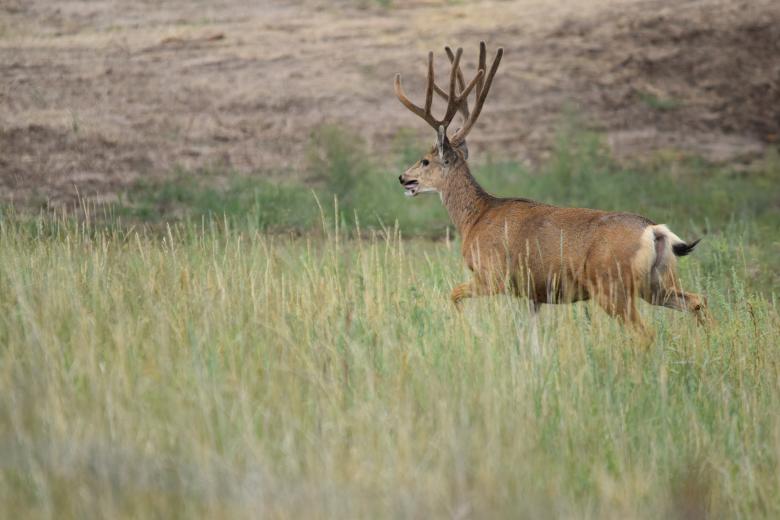BLM proposes plan to conserve wildlife and manage oil and gas in Colorado
Organization:
Media Contact:

LAKEWOOD, Colo. — The Bureau of Land Management today announced proposed changes to existing BLM resource management plans to promote conservation of wildlife corridors and priority big game habitat on public lands in Colorado, including through management of oil and gas activities and other efforts to incorporate the best available science.
The BLM coordinated with the State of Colorado, Tribes, local governments and local citizens to create and evaluate alternative management approaches for oil and gas development to minimize negative impacts on high priority habitat for big game species including elk, mule deer, pronghorn, and bighorn sheep. The review included approximately 6.17 million surface acres managed by the BLM and approximately 16 million acres of split-estate where the BLM only manages sub-surface federal minerals.
“The BLM is at the forefront of big game habitat conservation efforts for public lands in Colorado, taking this transformational step to align management with the State of Colorado, which has some of the strongest protections for wildlife in the U.S.,” said BLM Colorado State Director Doug Vilsack. "We will partner with stakeholders to achieve thriving big game populations while maintaining multiple uses of the public's lands."
Migratory patterns require minimal disturbance to migration corridors to allow big game species to access sparsely available wintering habitats. With consideration of multiple uses of public land and consistent with valid existing rights, the plan would also require oil and gas operators to develop and implement mitigation plans to minimize and offset direct, indirect, and cumulative adverse impacts.
Under the preferred alternative, where lands are open to oil and gas leasing under existing Resource Management Plans, the BLM would prescribe measures consistent with the Colorado Energy & Carbon Management Regulation to conserve seasonal habitats and connectivity within big game high priority habitat in support of Colorado Parks and Wildlife’s big game population objectives. Authorizations for new oil and gas facility locations within high priority big game habitat will be avoided when density exceeds one active oil and gas location per square mile or contributes to an increased density beyond one active oil and gas location per square mile.
While the proposed plan is limited to oil and gas management decisions related to big game, BLM also analyzed disturbance from other land uses in considering cumulative impacts. This analysis and data will be useful in the future as BLM continues to work with the state and other partners to enhance big game conservation while balancing the need for new outdoor recreation and energy development opportunities.
The BLM initiated the process in July 2022 with public scoping and released a draft EIS in November 2023 for a 90-day public comment period and review. A Notice of Availability for the Final EIS will publish in tomorrow’s Federal Register to begin a 60-day Governor’s consistency review and a 30-day protest period. Please visit the BLM Filing a Plan Protest page for more information. Protests must be received by August 19, 2024.
The plan, associated documents, and further instructions for filing a protest are available at the BLM National NEPA Register.
-BLM-
The BLM manages more than 245 million acres of public land located primarily in 12 western states, including Alaska, on behalf of the American people. The BLM also administers 700 million acres of sub-surface mineral estate throughout the nation. Our mission is to sustain the health, diversity, and productivity of America’s public lands for the use and enjoyment of present and future generations.
The BLM manages more than 245 million acres of public land located primarily in 12 western states, including Alaska, on behalf of the American people. The BLM also administers 700 million acres of sub-surface mineral estate throughout the nation. Our mission is to sustain the health, diversity, and productivity of America’s public lands for the use and enjoyment of present and future generations.
